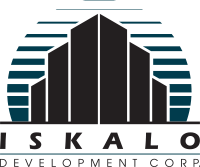The COVID-19 pandemic changed the way many businesses get work done and a flex office space is one change many businesses are benefiting from. With more and more workers returning to an office, it is obvious that workplace flexibility has gone from an advantage to an expectation. Though this has both pros and cons, the positives prove to outweigh the negatives when it comes to your business working in a flex office space.
What is a Flex Space?
You may be wondering what a flex space is and why your business would benefit looking into one. A “flexible space” is an office setting typically set in an open building where your employees work together in a more casual, collaborative environment. A flex space is really just a hybrid office where employees come to collaboratively work on projects while also having the opportunity to work from home. A simple way to understand what a flex space is, is that it’s a smaller office with more flexible work guidelines that still ensures quality work.
Flex Space Business Benefits
Collaborative Environment
With the pandemic impacting the way so many businesses are run, taking on a more collaborative approach has been beneficial and eye opening. Flex spaces allow employees to work with others outside of their niche and explore unique connections they may not have experienced in their traditional work setting. With less traditional work settings becoming a post-pandemic trend, flex office spaces allow employees to connect on more personal levels as well as grow their professional relationships without cubicles intervening.
Lower Cost Leases
More and more businesses and landlords are taking on flex spaces due to the financial benefits. While traditional offices are often more expensive, flex space warehouses or industrial buildings allow businesses to customize their lease to benefit their business. A popular leasing model used with flex office spaces is Triple Net Leases. This is when the landlord passes on three elements of expenses to the business: insurance, taxes, and maintenance. The landlord pays for larger capital expenses and gives the business more flexibility with payments.
Flexible Space
Obviously, flexibility is the key component of a flex office space in that it gives you and your team more versatility when it comes to work hours and team projects. When you aren’t working in a formal office setting, there are more opportunities for connecting through projects and sharing ideas. Also, with flexible work schedules comes more excitement when coming into the office. This energy helps ideas form and teamwork grow; flex office spaces are a great environment for just that.

